Sichuan-Style Cucumbers For The Year of The Rat
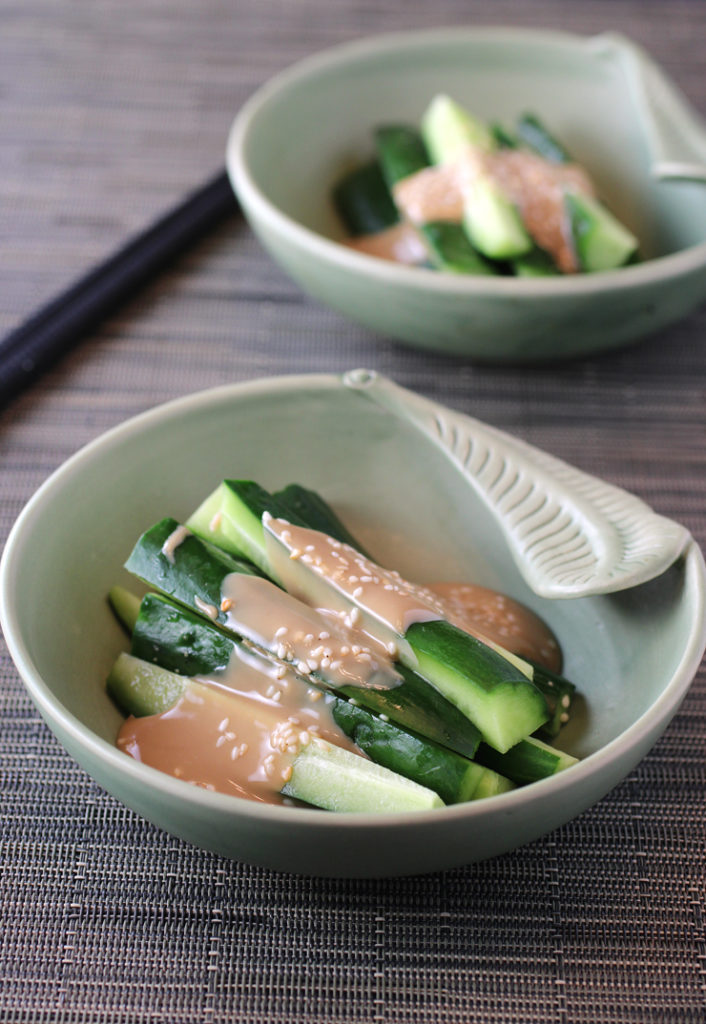
Tomorrow ushers in the Lunar New Year, the Year of the Rat. But truth be told, this Chinese dish is so easy and winsome, it’s perfect any day of any season.
The poetically named “Phoenix Tails in Sesame Sauce” grabs from the get-go with a quick, arresting sauce heady with the deliriously deep taste of roasted sesame seeds.
This side dish, appetizer or first-course is from the new “The Food of Sichuan” (W.W. Norton & Company, 2019), of which I received a review copy.
The 495-page treatise is by Fuchsia Dunlop, a true authority on regional Chinese cuisines. The London-based food writer speaks, reads and writes Chinese. Her many cookbooks spotlighting Chinese food are must-reads for anyone who desires a deep-dive into the differences and nuances of each culinary region.
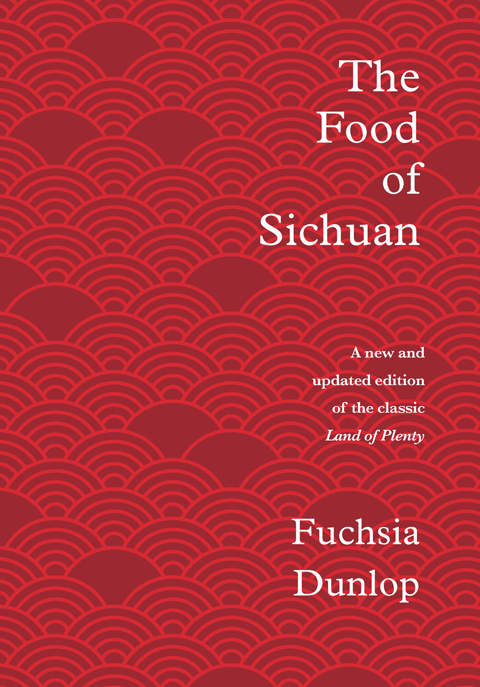
“The Food of Sichuan” is actually a revised and updated edition of her classic cookbook, “Land of Plenty,” which was published in 2001 when Sichuan cuisine was still little experienced in this country.
The new edition of the book contains more than 50 new recipes. Yes, Sichuan dishes are known for their liberal use of chiles and lip-numbing Sichuan peppercorns. But there are plenty of tamer dishes, too.
You’ll find yourself intrigued and salivating over ones such as “Fragrant and Crispy Duck,” “Eight-Treasure Black Rice Porridge,” “Dry-Braised Fish with Pork in Spicy Sauce,” and “Steamed Pork and Pumpkin Dumplings.”
“Phoenix Tails in Sesame Sauce” is traditionally made with celtuce or stem lettuce, which like it sounds is a leafy vegetable grown mostly for its stem. It’s nicknamed “phoenix tail,” Dunlop writes, because of its resemblance to the mythical bird’s tail.
While celtuce can sometimes be found at Asian markets, Dunlop offers an easier option: romaine hearts. In the recipe notes, she also suggests batons of cucumbers, which is what I went with.
The crunchy Japanese cucumbers are sliced into batons. Then a simple sauce of light soy sauce, sugar, sesame oil, and sesame paste is stirred together with a little water, then drizzled over top. The last step is to sprinkle on toasted sesame seeds. That’s it. You can make this in practically five minutes. How’s that for a win-win?
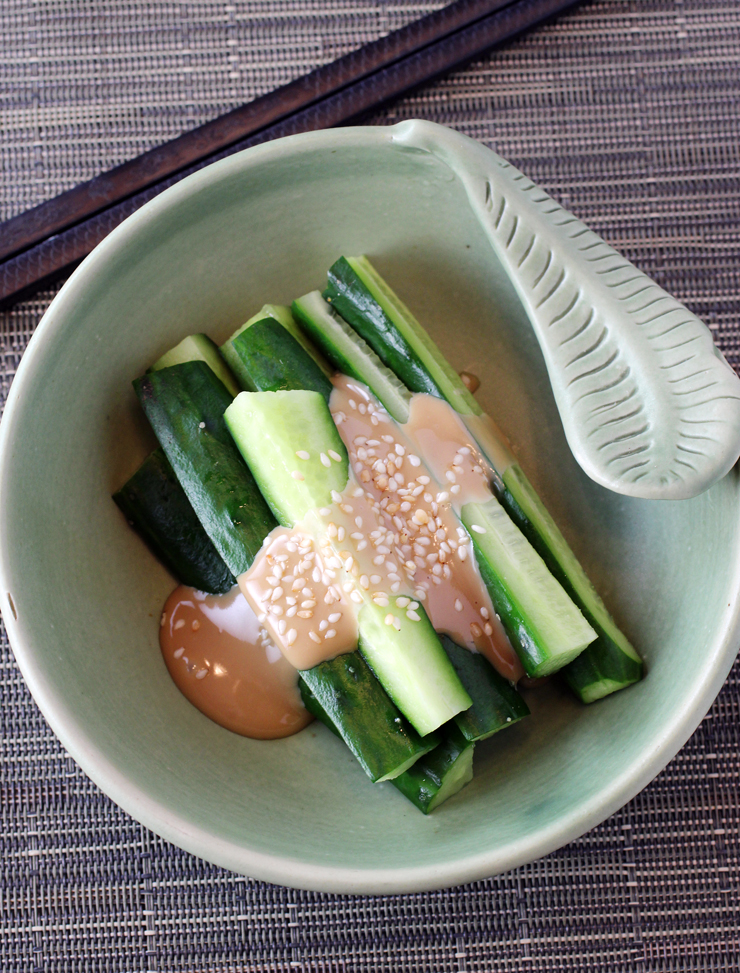
Dunlop advises to use Asian sesame paste rather than tahini. What’s the difference? Chinese or Japanese ones are made from sesame seeds that are roasted for a longer time, giving them a nuttier taste with a more prominent natural sweetness.
The resulting sauce is indeed intensely nutty tasting, and redolent of sesame, especially if you use sesame oil that’s toasted. Rich and creamy as it gets, this sauce is downright addictive.
If you didn’t want to use it on a plated dish, the sauce would be fabulous served in its own bowl as part of a crudites platter of celery, carrot, radishes, snap peas, and whatever else you dream up.
Enjoy it for the Lunar New Year — and way beyond.
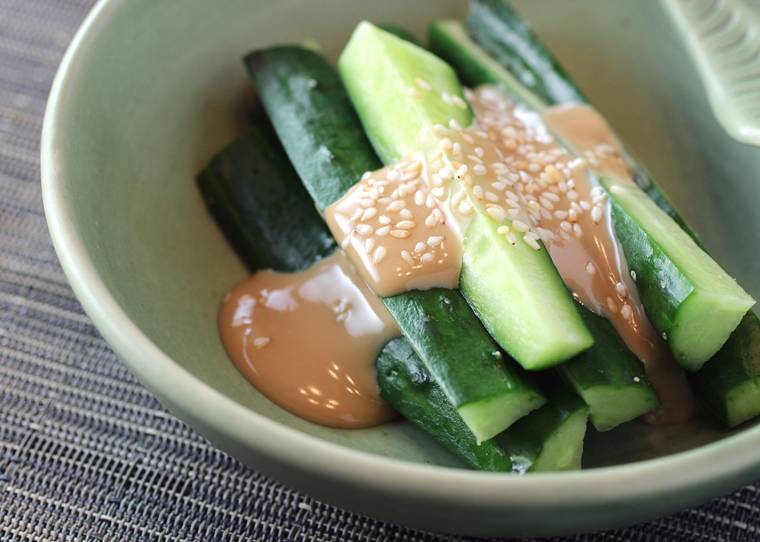
“Phoenix Tails” in Sesame Sauce
(Serves 2 to 4)
2 teaspoons sesame seeds
7 ounces celtuce tips, Indian lettuce, romaine hearts or 4 to 6 Japanese cucumbers
1 1/2 teaspoons light soy sauce
3/4 teaspoon superfine sugar
2 to 3 tablespoons cold stock or water
2 to 3 tablespoons Chinese or Japanese sesame paste
1 teaspoon sesame oil (regular or toasted)
1 1/2 tablespoons chile oil (optional)
Salt
Toast the sesame seeds in a wok or frying pan over gentle heat until golden, then set aside. Rinse and dry the lettuce, cut into chopstickable pieces and pileup on a serving dish. Or if using Japanese cucumbers, cut into batons and arrange on a serving plate.
Place soy sauce and sugar in a small bowl with 2 tablespoons stock or water and stir to dissolve the sugar. Tip the sesame paste into another small bowl with a little oil from the jar and smooth it with a spoon. Whisk in the soy sauce mixture in a few stages, making sure each addition is emulsified into the sauce before adding more.
When you have a smooth sauce, stir in the sesame oil and chile oil, if using, and then, if you need it, add another tablespoon or so of stock or water until you have a sleek liquid with the consistency of half-and-half: it’s important that the sauce is thick enough to cling to the lettuce or cucumbers, but thin enough to pour. Add a little salt, to taste, but take care not to overdo it, because this dish is best enjoyed as a refreshing contrast to more strongly flavored dishes.
Just before serving, pour the sauce over the lettuce or cucumbers, and garnish with the sesame seeds.
Adapted from “The Food of Sichuan” by Fuchsia Dunlop
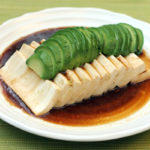
Another Fuchsia Dunlop Recipe to Try: Silken Tofu with Avocado

Looking forward to trying out this recipe !
William: It’s super tasty. Hope you enjoy it!